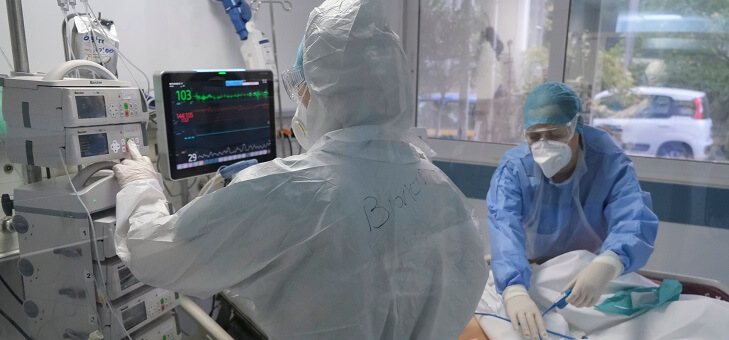Australia is currently one of the world’s COVID hotspots, with the number of daily cases per 100,000 people almost the highest of any country on the planet. Yet that seems to barely rate a mention on news reports.
In the wake of a federal election and a new government, that is perhaps understandable. And with the majority of Australians no longer severely affected by mask mandates and other restrictions, the pandemic is no longer foremost in many minds.
But the per capita figures clearly show it should be.
Read: Reducing COVID spread by 20 per cent could save thousands
Bearing that in mind, it seems almost impossible to believe that some who do test positive are missing out on potentially life-saving antiviral treatments. Yet that is the claim being made by some of Australia’s top doctors.
And cost is not the key factor.
The potentially life-saving drugs in question have been listed on the Pharmaceutical Benefits Scheme (PBS), meaning the purchase price will not be prohibitive, and there is no shortage of access to the medicine.
According to doctors, the main obstruction is simply a lack of awareness. In the past few months, two antiviral drugs – Paxlovid and Lagevrio – have been listed on the PBS.
Read: Vaccines only partially effective against long COVID, study finds
Paxlovid is a combination of two antiviral drugs – nirmatrelvir and ritonavir – and is available to people aged 65 or older with two other risk factors for severe disease, or one factor for those aged 75 and over. It is subsidised for patients who are moderately to severely immunocompromised and for Aboriginal or Torres Strait Islanders aged 50 or over with two other risk factors .
Lagevrio is the brand name for another antiviral drug known as molnupiravir.
Federal health department figures show 1379 patients received Paxlovid through their GP in the first weeks in May, when it was listed on PBS. But that figure could and should have been higher, say doctors.
Infectious disease physician Professor Allen Cheng says: “We are still getting quite a number of deaths – and making sure people know antivirals are available is one way of trying to address this.”
With 680,000 coronavirus cases and 563 deaths recorded in the first half of May, the need for an awareness campaign seems clear, Prof. Cheng says. “Clearly not everyone eligible or those that would benefit are getting access to the treatments.”
Read: Concerns COVID treatments may interact with common meds
Trials indicate that one in every 10 to 20 patients treated with Paxlovid will be avoid hospital. That may sound a low figure, but most hospitalised patients would prefer to stay at home with a milder form of COVID.
And of course, for every patient who doesn’t have to be admitted to hospital, the stress on the healthcare system will be lessened, which in turn will help alleviate the ambulance waiting time crisis.
While it seems governments and the media could do better in keeping the general public informed, the public can also become more pro-active in maintaining COVID awareness. Keep yourself informed via official government health websites and don’t hesitate to contact your GP if you are not well.
If you enjoy our content, don’t keep it to yourself. Share our free eNews with your friends and encourage them to sign up.

